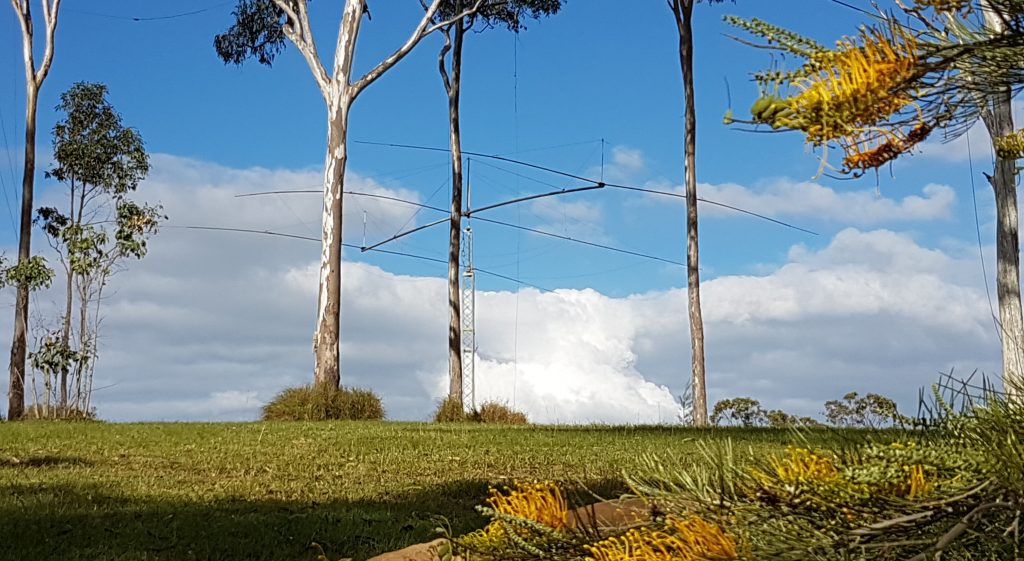Hello and welcome. My name is John Loftus. I enjoy conducting research into radio wave propagation and operate a radio station with callsign VK4CT

The radio station is licensed by the Australian Communications Media Authority (ACMA) to operate non-commercial radio communication apparatus. The location is 23Km inland from the East coast of Queensland Australia, Grid locator QG62JV. Sitting on top of a ridge 420m above sea level, the line of site views over Moreton Bay towards North America are magnificent. Station operation is shared with Bernd VK2IA.
Queensland is well suited to radio wave propagation – particularly toward North America, Asia and Europe on both short and long great-circle paths. During the lows of the 11 year sunspot cycle, Queensland has an advantage with weak signal reception – compared with southern states of Australia. This advantage is evident in data collected by wsprnet.org and the Reverse Beacon Network (RBN). As sunspots increase through the 11 year cycle, the Queensland advantage falls away.
Researching radio wave propagation
My focus is scientific research into radio wave propagation and innovative communication systems – put to the test in international contests.
My research interests contribute to:
- Reverse Beacon Network (RBN). John’s RBN page;
- Weak Signal Propagation Reporter (WSPR);
- Remote control of the station via the Internet of things;
- Antenna design and construction; and
- Adrenalin driven by the thrills of international CW contests.
Data collected by the RBN is freely available to the public and organisations for study and analysis at reversebeacon.net/raw_data/
Similarly, data collected by wsprnet.org is freely available to the public and organisations for study and analysis.
Comprehensive data analysis is presented by Phil at wspr.rocks
With this experience, I find more than one way to use WSPR analysis and the RBN to continuously improve radio station equipment and antennas.